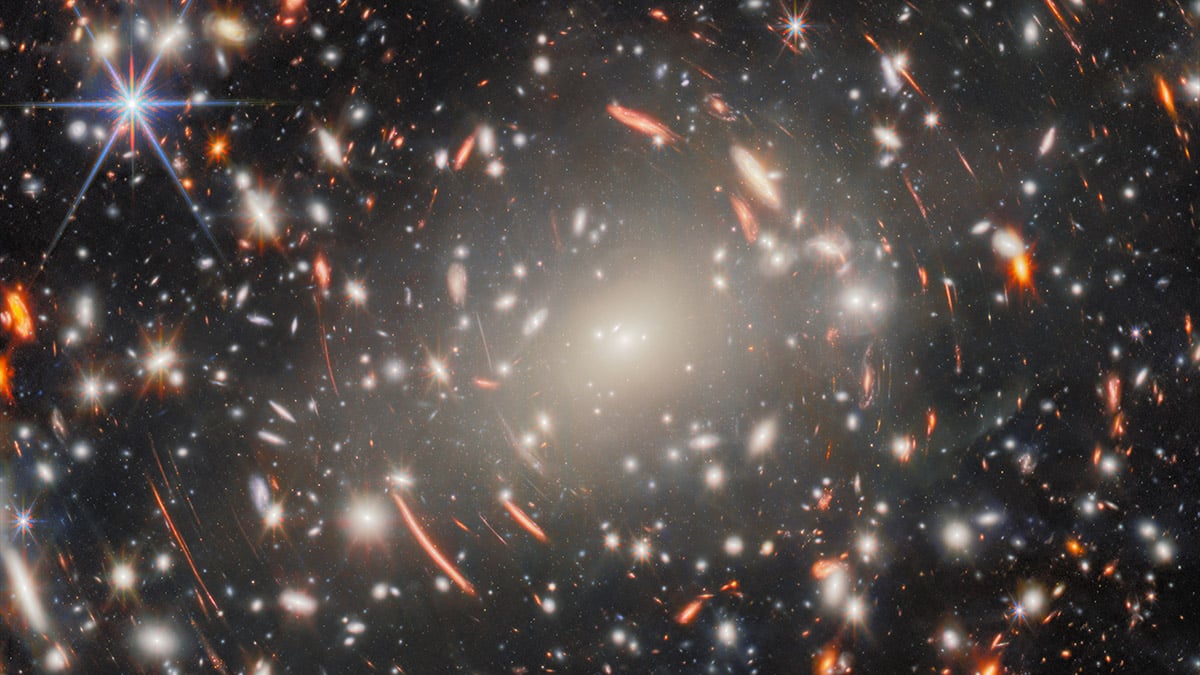
In May 2025, the James Webb Space Telescope (JWST) presented a breathtaking image of the galaxy cluster Abell S1063. This observation offers an unprecedented glimpse into the distant universe. The image showcases the cluster’s immense gravitational lensing effects, revealing galaxies from the early cosmos.
Abell S1063: A cosmic lens
Abell S1063 is a massive galaxy cluster located approximately 4.5 billion light-years away in the constellation Grus. Its immense mass acts as a gravitational lens, bending and magnifying the light from more distant galaxies situated behind it. This phenomenon allows astronomers to observe galaxies that would otherwise be too faint or distant to detect.
JWST’s Deep Field observation
The JWST dedicated around 120 hours to observe Abell S1063, marking its most prolonged focus on a single target to date. Utilizing its Near-Infrared Camera (NIRCam), JWST captured nine separate snapshots across different near-infrared wavelengths. This deep-field observation reveals glowing streaks and warped arcs—magnified and distorted images of faint galaxies from the early universe.

Gravitational lensing: Nature’s telescope
Gravitational lensing occurs when a massive object, like Abell S1063, bends the light from objects behind it due to its gravitational field. This effect magnifies and distorts the images of background galaxies, making them visible to telescopes like JWST. In the JWST image, these appear as elongated arcs and streaks surrounding the cluster.
Insights into the early universe
By leveraging the gravitational lensing of Abell S1063, JWST has been able to detect extremely distant galaxies, providing insights into the early stages of galaxy formation and the conditions of the universe shortly after the Big Bang. Some of these galaxies date back to the “cosmic dawn,” a period when the first stars and galaxies formed.
You can watch the pan video of the image here:

Hubble’s legacy: The Frontier Fields program
Before JWST, the Hubble Space Telescope observed Abell S1063 as part of its Frontier Fields program. Hubble’s images revealed the cluster’s gravitational lensing effects, allowing astronomers to study galaxies from just a billion years after the Big Bang. These observations laid the groundwork for JWST’s deeper exploration.
While Hubble provided valuable insights into Abell S1063, JWST’s advanced capabilities offer a more detailed view. JWST’s infrared sensitivity allows it to detect fainter and more distant galaxies, pushing the boundaries of our understanding of the early universe. The combination of both telescopes’ observations provides a comprehensive picture of cosmic evolution.

The JWST’s deep-field image of Abell S1063 marks a significant milestone in astronomical observations. By capturing the faint light of ancient galaxies, JWST offers a window into the universe’s formative years. This observation not only showcases JWST’s advanced capabilities but also enhances our understanding of cosmic evolution.
Clear skies!

